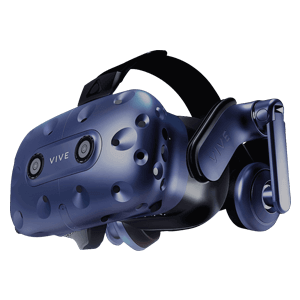Kişisel Verilerin Korunması
WEBSİTESİ ZİYARETÇİSİ Aydınlatma Metni
6698 sayılı Kişisel Verilerin Korunması Kanunu’na (“Kanun”) göre CODEMODEON BİLİŞİM ÇÖZÜMLERİ VE TİCARET LİMİTED ŞİRKETİ (Bundan sonra “CODEMODEON” olarak anılacaktır) sizinle ilgili kişisel verileri işlemesi sebebiyle veri sorumlusu olarak tanımlanmaktadır. Kanunun “Aydınlatma Yükümlülüğü” başlıklı 10’ncu maddesine göre veri sorumluları, kişisel verilerini işledikleri gerçek kişileri bazı konularda bilgilendirmekle yükümlüdür.
Bu metin hem mevzuata uyum sağlanması hem de şeffaf ve hesap verebilir olabilmek amacıyla CODEMODEON tarafından hazırlanmıştır.
İlgili Kişi: Şirketimizin websitesini ziyaret etmeniz sebebiyle birtakım kişisel verilerini işlediğimiz siz, kanun tarafından ilgili kişi olarak tanımlanmaktasınız.
Veri Sorumlusu: Sizinle ilgili kişisel veriler konusunda kişisel verilerin işleme amaçlarını ve vasıtalarını belirleyen, veri kayıt sisteminin kurulmasından ve yönetilmesinden sorumlu olan (CODEMODEON)veri sorumlusudur.
İşlenen Kişisel Verileriniz, İşlenme Amaçları ve Hukuki Sebepleri
| İşlenen Kişisel Verileriniz | İşlenme Amaçları | Hukuki Sebepleri |
| · İşlem Güvenliği (Aktarılan Veri Miktarı, Bağlantı Bitiş Zamanı, Bağlantı Zamanı, IP Adresi, Kullanılan IP Protokolü, Ziyaret Edilen Sayfa) verileriniz | İletişim Faaliyetlerinin Yürütülmesi (Websitesi Trafik Bilgilerinin Elde Edilmesi) Amacıyla | KVKK Md. 5/2(a): kanunda açıkça öngörülmesine istinaden (5651 Sayılı Kanun uyarınca bahsedilen verilerinizin elde edilmesi veri sorumlusunun hukuki yükümlülüğüdür) |
| · İşlem Güvenliği (Aktarılan Veri Miktarı, Bağlantı Bitiş Zamanı, Bağlantı Zamanı, IP Adresi, Kullanılan IP Protokolü, Ziyaret Edilen Sayfa) verileriniz | İletişim Faaliyetlerinin Yürütülmesi (Websitesi Trafik Bilgilerinin Saklanması) Amacıyla | KVKK Md. 5/2(a): kanunda açıkça öngörülmesine istinaden (5651 Sayılı Kanun uyarınca bahsedilen verilerinizin saklanması veri sorumlusunun hukuki yükümlülüğüdür) |
Tarafımızca işlenmektedir.
Kişisel Verilerin Kimlere ve Hangi Amaçla Aktarılabileceği
Kişisel verileriniz KVKK Md.28/1 çerçevesinde talep edilmesi halinde aydınlatma yükümlülüğü olmadan ve açık rızanız aranmadan ilgili makamlara aktarılabilir.
Bunun dışında öngörülemeyen durumlarda da kişisel verileriniz kanunlarda açıkça belirtilmiş durumlarda talep edilmesi halinde kanunlarda belirtilen kamu kurumlarına (Bakanlıklar gibi idari makamlara) kanunda öngörülen amaç ve sınırlamalar dahilinde aktarılabilir.
Aydınlatma yükümlülüğü olmayan ve açık rızanızı gerektirmeyen yasal yükümlülüklerimizin dışında;
Kişisel verileriniz aktarılmayacaktır.
Kişisel Verilerin Elde Edilme Yöntemleri
Kişisel verileriniz websitenin ziyareti yoluyla otomatik yöntemlerle elde edilmektedir.
Bize Ulaşın formunu dolduruyorsanız;
İşlenen Kişisel Verileriniz, İşlenme Amaçları ve Hukuki Sebepleri
| İşlenen Kişisel Verileriniz | İşlenme Amaçları | Hukuki Sebepleri |
| · Kimlik(Ad) · İletişim(e-Posta) · Müşteri İşlem(Mesaj, İçerik, Gönderilme Tarihi) verileriniz | İletişim Faaliyetlerinin Yürütülmesi (Bize Ulaşın Formu İle Tarafınızla İletişime Geçmek Ve Talebinizi Yerine Getirmek) Amacıyla | KVKK Md. 5/1 Açık Rızanıza istinaden (Belirli bir konuya ilişkin özgür iradenizle vermiş olduğunuz açık rıza onay butonuna verdiğiniz onaya istinaden belirtilen kişisel verileriniz işlenmektedir.) |
| · Kimlik(Ad) · İletişim(e-Posta) · Müşteri İşlem(Mesaj, İçerik, Gönderilme Tarihi) verileriniz | Saklama Ve Arşiv Faaliyetlerinin Yürütülmesi (Bize Ulaşın Formu İle Tarafınızla İletişime Geçmek Ve Talebinizi Yerine Getirmek) Amacıyla | KVKK Md. 5/2(f): İlgili kişinin temel hak ve özgürlüklerine zarar vermemek kaydıyla, veri sorumlusunun meşru menfaatleri için veri işlenmesinin zorunlu olması. (Bize ulaşın formu ile tarafınızla iletişime geçmek için anılan kişisel verilerinizin saklanması gerekmektedir. İlgili kişilerin haklarına zarar vermemek kaydıyla anılan verilerin kaydedilmesinde veri sorumlusunun açıkça meşru menfaati bulunmaktadır. ) |
Tarafımızca ek olarak işlenmektedir.
Kişisel Verilerin Kimlere ve Hangi Amaçla Aktarılabileceği
Kişisel verileriniz KVKK Md.28/1 çerçevesinde talep edilmesi halinde aydınlatma yükümlülüğü olmadan ve açık rızanız aranmadan ilgili makamlara aktarılabilir.
Bunun dışında öngörülemeyen durumlarda da kişisel verileriniz kanunlarda açıkça belirtilmiş durumlarda talep edilmesi halinde kanunlarda belirtilen kamu kurumlarına (Bakanlıklar gibi idari makamlara) kanunda öngörülen amaç ve sınırlamalar dahilinde aktarılabilir.
Aydınlatma yükümlülüğü olmayan ve açık rızanızı gerektirmeyen yasal yükümlülüklerimizin dışında;
Kişisel verileriniz aktarılmayacaktır.
Kişisel Verilerin Elde Edilme Yöntemleri
Kişisel verileriniz web sitesi ortamında bilgilerin doldurması yoluyla otomatik yöntemlerle elde edilmektedir.
E-Bülten formunu dolduruyorsanız;
İşlenen Kişisel Verileriniz, İşlenme Amaçları ve Hukuki Sebepleri
| İşlenen Kişisel Verileriniz | İşlenme Amaçları | Hukuki Sebepleri |
| · İletişim(e-Posta) | İletişim Faaliyetlerinin Yürütülmesi (E-Bülten Üyeliğinizin Başlatılması Ve Bülten Gönderilmesi İçin e-posta bilgilerinizin alınması) Amacıyla | KVKK Md. 5/1 Açık Rızanıza istinaden Belirli bir konuya ilişkin özgür iradenizle vermiş olduğunuz açık rıza onay butonuna verdiğiniz onaya istinaden belirtilen kişisel verileriniz işlenmektedir. |
| · İletişim(e-Posta) | Saklama Ve Arşiv Faaliyetlerinin Yürütülmesi (Bülten Gönderilmesi İçin e-posta bilgilerinizin saklanması) Amacıyla | KVKK Md. 5/2(f): İlgili kişinin temel hak ve özgürlüklerine zarar vermemek kaydıyla, veri sorumlusunun meşru menfaatleri için veri işlenmesinin zorunlu olması. (E-bülten gönderilmesi için anılan kişisel verilerinizin saklanması gerekmektedir. İlgili kişilerin haklarına zarar vermemek kaydıyla anılan verilerin kaydedilmesinde veri sorumlusunun açıkça meşru menfaati bulunmaktadır. ) |
Tarafımızca ek olarak işlenmektedir.
Kişisel Verilerin Kimlere ve Hangi Amaçla Aktarılabileceği
Kişisel verileriniz KVKK Md.28/1 çerçevesinde talep edilmesi halinde aydınlatma yükümlülüğü olmadan ve açık rızanız aranmadan ilgili makamlara aktarılabilir.
Bunun dışında öngörülemeyen durumlarda da kişisel verileriniz kanunlarda açıkça belirtilmiş durumlarda talep edilmesi halinde kanunlarda belirtilen kamu kurumlarına (Bakanlıklar gibi idari makamlara) kanunda öngörülen amaç ve sınırlamalar dahilinde aktarılabilir.
Aydınlatma yükümlülüğü olmayan ve açık rızanızı gerektirmeyen yasal yükümlülüklerimizin dışında;
Kişisel verileriniz aktarılmayacaktır.
Kişisel Verilerin Elde Edilme Yöntemleri
Kişisel verileriniz webistesi ortamında bilgilerin doldurması yoluyla otomatik yöntemlerle elde edilmektedir.
Instagram Filtre-İstek Formunu dolduruyorsanız;
İşlenen Kişisel Verileriniz, İşlenme Amaçları ve Hukuki Sebepleri
| İşlenen Kişisel Verileriniz | İşlenme Amaçları | Hukuki Sebepleri |
| · Kimlik(Ad) · İletişim(e-Posta,Telefon) · Hukuki İşlem(Firma, Sektör) · Müşteri İşlem(Mesaj, Proje) verileriniz | Mal / Hizmet Satış Süreçlerinin Yürütülmesi (Firmamızın Instagram Filtre Hizmetini Sağlaması İçin Instagram Filtre-İstek Formunun Alınması) Amacıyla | KVKK Md. 5/2(c) :Bir sözleşmenin kurulması veya ifasıyla doğrudan doğruya ilgili olması kaydıyla, sözleşmenin taraflarına ait kişisel verilerin işlenmesinin gerekli olması bendine istinaden (Codemodeon İnstagram -Filtre sözleşmesinin kurulması amacıyla belirtilen kişisel verilerinizi elde etmemiz ve saklamamız gereklidir.) |
Tarafımızca ek olarak işlenmektedir.
Kişisel Verilerin Kimlere ve Hangi Amaçla Aktarılabileceği
Kişisel verileriniz KVKK Md.28/1 çerçevesinde talep edilmesi halinde aydınlatma yükümlülüğü olmadan ve açık rızanız aranmadan ilgili makamlara aktarılabilir.
Bunun dışında öngörülemeyen durumlarda da kişisel verileriniz kanunlarda açıkça belirtilmiş durumlarda talep edilmesi halinde kanunlarda belirtilen kamu kurumlarına (Bakanlıklar gibi idari makamlara) kanunda öngörülen amaç ve sınırlamalar dahilinde aktarılabilir.
Aydınlatma yükümlülüğü olmayan ve açık rızanızı gerektirmeyen yasal yükümlülüklerimizin dışında;
Kişisel verileriniz aktarılmayacaktır.
Kişisel Verilerin Elde Edilme Yöntemleri
Kişisel verileriniz websitesi ortamında bilgilerin doldurması yoluyla otomatik yöntemlerle elde edilmektedir.
Kişisel Verilerinizle İlgili Haklarınız
İlgili kişiler, kişisel verilerine ilişkin haklarını öncelikle veri sorumlusuna iletmek zorundadırlar. Kanunun 14’üncü maddesine göre Kişisel Verileri Koruma Kurulu’na doğrudan şikayette bulunulamaz.
| | Kanun uyarınca kişisel verilerinizle ilgili olarak: |
| | a) Kişisel veri işlenip işlenmediğini öğrenme, |
| | b) Kişisel verileriniz işlenmişse buna ilişkin bilgi talep etme, |
| | c) Kişisel verilerinizin işlenme amacını ve bunların amacına uygun kullanılıp kullanılmadığını öğrenme, |
| | ç) Yurt içinde veya yurt dışında kişisel verilerinizin aktarıldığı üçüncü kişileri bilme, |
| | d) Kişisel verilerinizin eksik veya yanlış işlenmiş olması hâlinde bunların düzeltilmesini isteme, |
| | e) İşlenmesini gerektiren sebeplerin ortadan kalkması hâlinde kişisel verilerinizin silinmesini veya yok edilmesini isteme, |
| | f) (d) ve (e) bentleri uyarınca yapılan işlemlerin, kişisel verilerinizin aktarıldığı üçüncü kişilere bildirilmesini isteme, |
| | g) İşlenen verilerinizin münhasıran otomatik sistemler vasıtasıyla analiz edilmesi suretiyle aleyhinize bir sonucun ortaya çıkmasına itiraz etme, |
| | ğ) Kişisel verilerin kanuna aykırı olarak işlenmesi sebebiyle zarara uğramanız hâlinde zararın giderilmesini talep etme haklarını kullanabilirsiniz. |
Başvuru Yöntemi
Başvurunuzu:
- Viaport Venezia Mega Sitesi Karadeniz Mah. No:408 G3 Blok Kat 6 D:347Gaziosmanpaşa/adresine yazılı olarak;
- Güvenli elektronik imza veya mobil imza ile [email protected] adresine;
- Elektronik posta adresinizin sistemimizde kayıtlı olması halinde aynı e-posta adresini kullanarak [email protected] e-posta göndererek yapabilirsiniz.
Başvurunuzda;
- Adınızın, soyadınızın ve başvuru yazılı ise imzanızın,
- Türkiye Cumhuriyeti vatandaşları için T.C. kimlik numaranızın, yabancı iseniz uyruğunuzun, pasaport numaranızın veya varsa kimlik numaranızın,
- Tebligata esas yerleşim yeri veya iş yeri adresinizin,
- Varsa bildirime esas elektronik posta adresi, telefon ve faks numaranızın,
- Talep konunuzun,
bulunması zorunlu olup varsa konuya ilişkin bilgi ve belgelerin de başvuruya eklenmesi gerekmektedir.
CODEMODEON, kimliğinizi doğrulama hakkını saklı tutar.
Başvuru sırasında uyulması gereken usul kuralları ve daha detaylı bilgiye Kişisel Verileri Koruma Kurumu’nun “Veri Sorumlusuna Başvuru Usul ve Esasları Hakkında Tebliğ“indenulaşabilirsiniz.



3 Comments